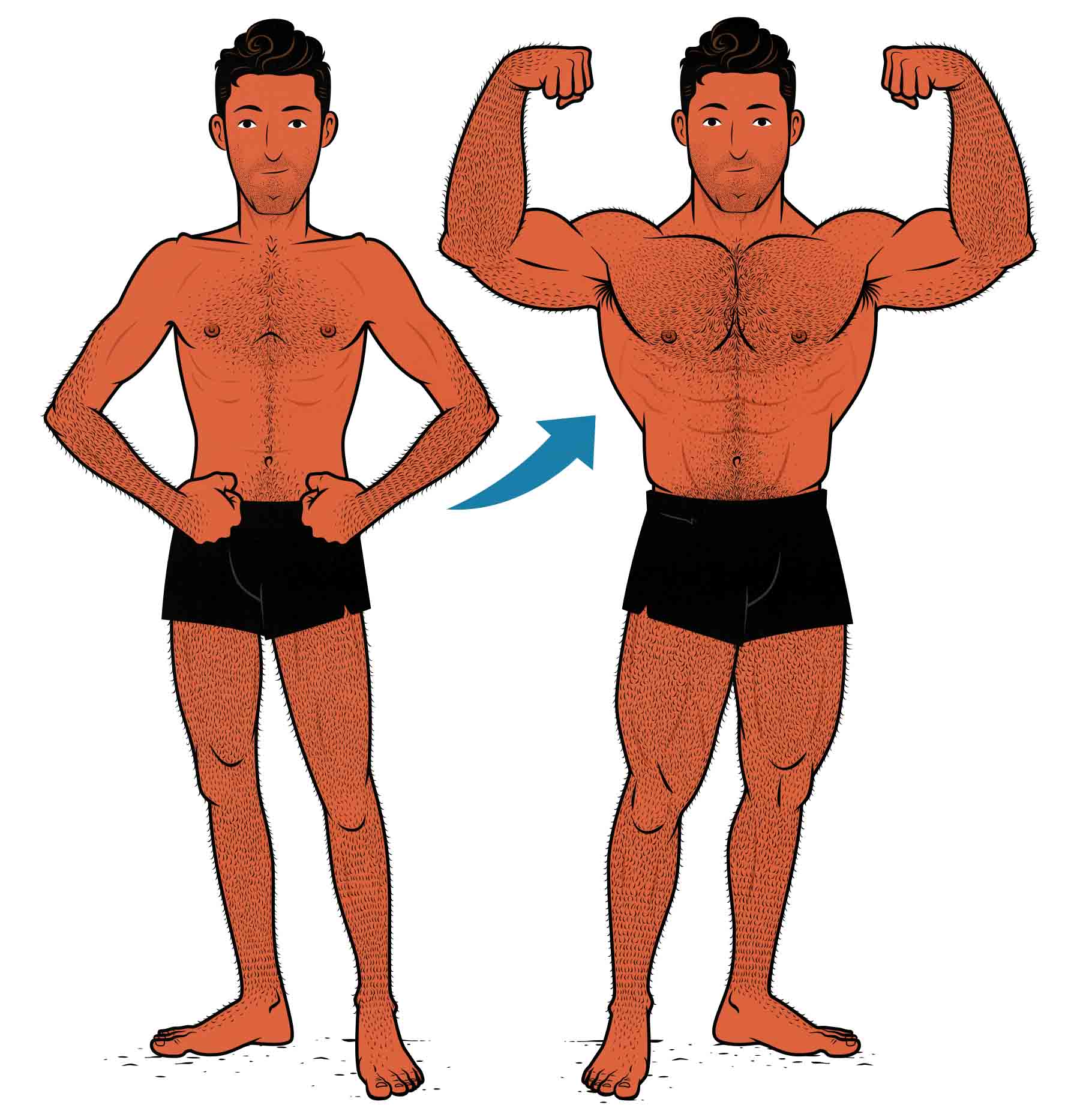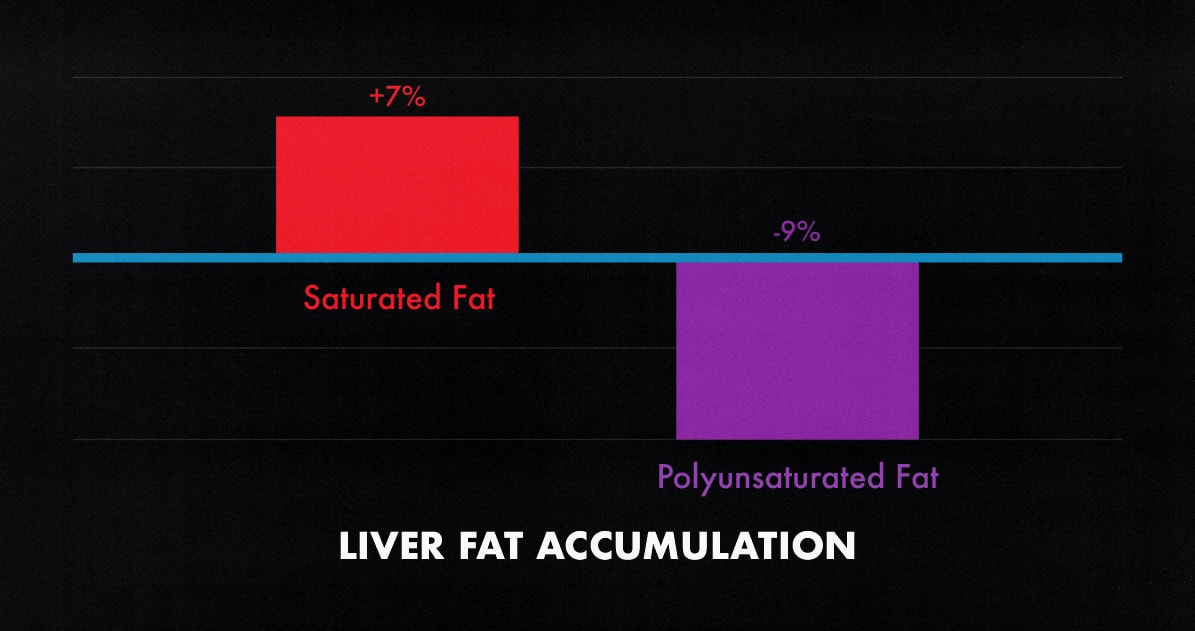
Can Skinny People Get Type 2 Diabetes?
Skinny people can get type 2 diabetes, but it’s uncommon, and you can cut your risk down to almost nothing. Perhaps more importantly, the same lifestyle that prevents diabetes will improve almost every other aspect of your health (and appearance).
Marco has a degree in health sciences (BHSc) and is a certified nutrition coach. Cassandra is a registered nutritionist. Our specialty is working with naturally thin people, and we’ve been doing it full-time for the past 15 years. Of the tens of thousands of skinny clients we’ve worked with, almost none of them have struggled with insulin sensitivity or type 2 diabetes.
However, we wanted to be extra certain, so I spoke with two experts who specialize in diabetes: Dr. Karl Nadolsky, an endocrinologist, and Danny Lennon, a nutritionist on the Advisory Board of the Sports Nutrition Association.

Can Skinny People Get Away With Eating Sugar?
The main fear I hear from skinny people is that they eat a lot of sugar, and sugar causes diabetes, so they must be at risk for developing diabetes. That isn’t quite what causes diabetes, though. Not really.
People who eat more whole grains, fruits, vegetables, and legumes tend to have lower rates of diabetes than average, even if they eat more carbs than average. That’s true even when some of those carbs are high in sugar (e.g. fruits).
This isn’t controversial. All the evidence lines up fairly neatly:
- A large meta-analysis of 75,000 people with type 2 diabetes found that consuming more fruits and vegetables reduced all-cause mortality by 18% (meta).
- Both low-fat and low-carb diets have been shown to improve heart health and blood sugar levels, as long as the overall diet is nutritious (study).
- Eating more fruits and vegetables improves gut health, which in turn lowers the risk of heart disease, obesity, and diabetes (study).
- People who eat more legumes have lower rates of diabetes (meta).
- People who eat more fruits, vegetables, and whole grains are more likely to become centenarians (study).
- A diet rich in healthy foods, including healthy carbs, is associated with living 8 extra years (study).
- Eating more fruits and vegetables specifically is associated with living 3 years longer (study).
- Eating a wider variety of fruits and vegetables improves most health markers (study).
There’s a huge caveat here. We’re talking about whole foods. You wouldn’t want to drink litres of soda every day, and it helps to cut back on junk food in general. More on that in a moment.
But even if you have more juice or soda or candy than you should, your risk of developing diabetes is still quite low. That isn’t the main cause of type 2 diabetes.
Type 2 Diabetes Risk Factors
There are a few things that tend to cause diabetes. Let’s go through them (study):
- Overweight and obesity: 90% of people with diabetes are overweight or obese (CDC). Skinny people aren’t overweight, which significantly reduces your risk.
- Skinny fatness: The main risk factor for type 2 diabetes is having excess fat around your organs. If you have a disproportionate amount of body fat while still having a normal body weight, you’re “skinny fat.” That raises your risk.
- Sedentary Lifestyle: 32% of people with diabetes are sedentary (CDC). Some skinny people are sedentary desk workers, like I was. That can open us up to health problems normally reserved for overweight people. In my case, I started developing heart disease. For other skinny people, it could be insulin resistance and then diabetes.
- Heart disease: This is the one that gets my family. The risk factors for heart disease and diabetes overlap. For example, poor blood lipids can cause both atherosclerotic heart disease and insulin resistance (which can progress to diabetes). Then, if you start taking statins to treat that dyslipidemia, one of the side effects is an even greater risk of insulin resistance. That happened to my dad—his fasting blood sugar was very high, even though he was thin—but his doctor caught it early, and they adjusted his heart medication.
- Skinniness: Having too little muscle mass is a minor risk factor. Skinny people, by definition, have too little muscle mass. If you want to know if you’re too skinny to be healthy, you can use this calculator.
- Genetics: If you have a family history of diabetes and/or if you’re South Asian. People of Indian ancestry seem to be particularly susceptible to both skinny-fatness and diabetes. In my case, knowing that my dad got insulin resistance from statins, that’s something I’ll need to watch out for, too.
- Age: As you get older, your risk of developing diabetes goes up. That’s especially true if you’re overweight, with excess fat around your organs. It begins with insulin resistance and typically progresses to type 2 diabetes within about ten years.
So, if you’re a skinny person with a thin, trim waist, then your chances of developing diabetes are quite low. You might not be in great health, but diabetes probably won’t be what gets you. I’ve worked with tens of thousands of naturally thin clients between the ages of 18 to 70, many of whom were living sedentary lifestyles and eating terrible diets. None of them had type 2 diabetes.
On the other hand, if you’re skinny fat (thin but with belly fat), eat a bad diet, and live a sedentary lifestyle, then you have a few relevant risk factors. More on that in a second.
The Doctor and the Nutritionist
I spoke with these two experts when doing research for another article about how bulking and high-carb diets affect diabetes risk for skinny guys. Everything they said also applies here, so I’ll quickly summarize it.
Dr. Karl Nadolsky confirmed that the two leading causes of insulin resistance are high body fat levels and physical inactivity, but he cautioned that age and genetics can also be factors. So, if you’re in your sixties, have some extra fat around your belly, and diabetes runs in your family, then you can be at higher risk even if you have thin arms and legs.
Danny Lennon added some extra dietary advice. He told me that overconsuming saturated fat can increase our blood cholesterol and cause visceral fat to slowly accumulate, which can then lead to insulin resistance (study).

He brought up a study by Bjermo and colleagues, in which the group given extra saturated fat increased their liver fat by 7%, whereas the group given extra polyunsaturated fat decreased their liver fat by 9% (study).
So, overall, skinny people are at low risk for developing diabetes. Less than 10% of people with diabetes are thin. But it’s not impossible, especially if you’re inactive, eat a poor diet, or have a genetic predisposition for it.
How to Reduce Your Risk
The good news is that being skinny already takes care of the biggest cause of type 2 diabetes: obesity. Here’s what you can do to cut your risk down even lower (study):
- Lift weights and build muscle: Lifting weights helps burn through the glycogen (sugar) in your muscles. Then, when you eat, your muscles will soak up the sugar in your blood. The bigger your muscles are, and the more glycogen you burn through, the better you’ll be able to regulate your blood sugar (full explanation). Here’s a guide for skinny beginners.
- Eat a nutritious diet: Eating a good diet will support muscle growth and fat loss, help to keep your blood pressure low, and help to keep your blood lipids within the healthy range. Focus on whole foods, such as fruits, vegetables, lean meats, yogurt, eggs, fatty fish, nuts, seeds, beans, olive oil, coffee, tea, and dark chocolate. Here’s a guide.
- Be active: There are two good ways to be active. The first is to get 8,000–10,000 steps per day. That usually means being on your feet for about 2 hours per day. The second way is to do at least 150 minutes of moderate-intensity cardio or 75 minutes of vigorous-intensity cardio per week. Moderate-intensity cardio can start as simply as going on brisk walks. Here’s a full guide.
- Keep your waist trim: A waist circumference at the height of your belly button of 40 inches (102 cm) or more can increase your risk of heart disease and diabetes (study). If you want to play it especially safe, aim for a waist circumference of less than half your height.
- Get enough good sleep: Aim for 7–9 hours of sleep per night.
- Don’t smoke.

If you want us to walk you through the entire process, start to finish, we have a full program for skinny and skinny-fat guys. It addresses every major risk factor for type 2 diabetes, and it includes a 6-month full-body workout routine, nutrition guide, recipe book, and online coaching from us. Your results are fully guaranteed.



Muscle-Building Mini-Course via Email
Sign up for our 5-part muscle-building mini-course that covers everything you need to know about:
Here are some related articles